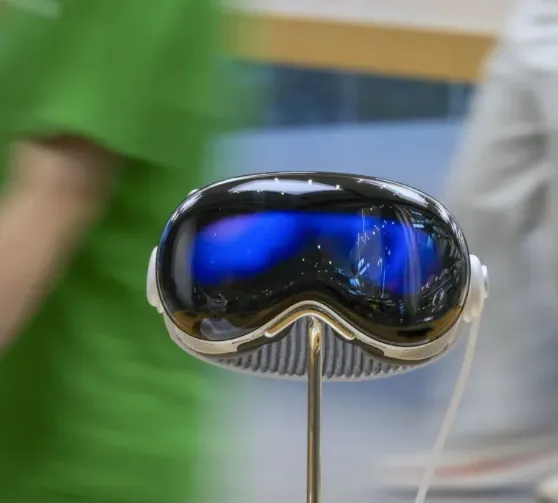Apple is preparing to enhance the Apple Vision Pro with its upcoming R2 chip, which will be built on TSMC’s cutting-edge 2nm process. This move highlights Apple’s ongoing commitment to pushing the boundaries of mixed reality while showcasing its most advanced silicon outside of traditional devices like iPhones and Macs.
The Importance of the 2nm R2 Chip
The R2 chip will bring substantial performance improvements, offering up to 15% faster speeds or 30% lower power consumption compared to the current 3nm chips. These upgrades are crucial for a mixed-reality headset, where efficiency is key to maintaining smooth, high-quality experiences. The lower power consumption could also mean lighter batteries and less heat generated, ensuring a more comfortable experience for users during extended sessions.
Apple’s Strategic Position in Chip Production
Apple has already secured a significant portion of TSMC’s early production capacity for the 2nm process, with TSMC planning to produce 40,000 wafers per month by late 2025 and scaling up to nearly 100,000 in 2026. This early access to next-gen chip technology gives Apple a distinct advantage over its competitors in the race to integrate advanced chips into its products.
The Risks of Pioneering Innovation
However, the shift to 2nm chips isn’t without its challenges. Early production yields tend to be low, and the high cost of manufacturing — around $30,000 per wafer — means that defective chips could be a costly setback. While Apple can afford such losses with its flagship iPhones, the Vision Pro’s premium price tag of over $3,000 leaves less room for error. If the R2 chip faces reliability issues, such as overheating or subpar performance, it could lead to negative reviews and impact the headset’s reputation.
Apple’s Long-Term Silicon Strategy
The R2 chip is just one piece of Apple’s broader silicon strategy. The upcoming iPhone 18 Pro is expected to feature the A20 chip, while future MacBook models will also adopt the 2nm process. There’s even speculation that Apple could release a mid-cycle refresh of the Vision Pro with an M4 or M5 chip before the R2 arrives, ensuring that the product line continues to evolve and meet consumer expectations.
By designing its own chips and relying on TSMC for production, Apple is further tightening its grip on device performance, power efficiency, and seamless integration across its ecosystem. This strategy not only enhances the user experience but also makes it difficult for competitors to keep pace with Apple’s innovation.
Looking Ahead
If successful, the R2 chip could help justify the Vision Pro’s hefty price tag and transform the headset into more than just a high-end novelty. On the other hand, any missteps in the chip’s development could risk relegating the Vision Pro to a niche product within Apple’s extensive lineup. The coming months will be crucial in determining whether the R2 chip can elevate the Vision Pro into a mainstream offering or if it will fall short of expectations.
